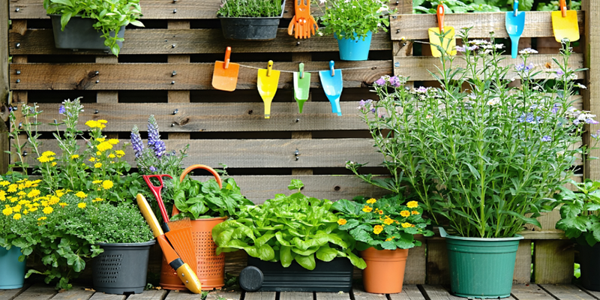5 Tips You Need To Know To Prepare Your Garden For Winter
Winter is coming. Are you prepared for it? Are you having trouble finding a way to protect your garden throughout the winter season? You have to take precautions for the winter season for your plant to remain intact, your soil to be healthy, and your garden structure to stay still for spring. Here, we discuss all the attributes you need to know as a gardener to ensure the safety and health of your plants from winter to spring.
1. Tidy Up Your Garden
Cleaners ensure the longevity of the plants regardless of the season. Before winter strikes, keep your garden clean by collecting all dead and diseased plants. Getting lead from these useless parts of plants ensures that diseases will not spread and leaves the garden organized and spreading. Although removing diseased plants is crucial for safeguarding the future of your garden, leaving healthy stems and seed heads in place can be a source of food and habitat for pests and wildlife.

You can also tidy up your garden by pruning overgrown trees and shrubs. Pruning is handy before winter as it helps plants manage winter winds and weight from snow and ice. However, as you run, you need to be cautious. Do not prune every branch; focus on cutting back dead or damaged branches. Over-pruning may weaken the plants.
2. Use Mulches To Protect Your Soil And Cover Crops To Enrich It
Add Organic Matter
Winter is a beautiful time to add organic matter to your soil. Compost, well-rotted manure, and leaf mould in garden beds are all nutrient foods that will satiate the soil and help improve its structure. By the end of this winter season, these amendments will have broken down, resulting in nutrient-rich soil ready to plant when spring finally arrives.
Cover Crops: A Smart Way to Nourish and Protect
Consider topping your soil off with clover, rye, or vetch to protect and enrich it. Cover crops add nitrogen, prevent erosion, and suppress weeds. Till them into the soil in spring, along with organic matter and nutrients.
Tip: Cover crops are especially useful in vegetable gardens, where heavy-feeding plants like tomatoes and squash deplete nutrients quickly.
3. Winterize Your Garden Tools And Structures
Clean and Store Gardening Tools
Clean and sharpen your gardening tool for storage during winter. Scrub off the dirt; put oil on metal parts; sharpen blades for a smooth cut in the next season; and store in a dry, secure location, such as a shed or garage, to protect them against moisture.
Protect Garden Structures
Inspect trellises, raised beds, and other wood structures for damage. Replace any loose or rotten parts. Seal wood with a fresh application of weather-resistant paint or stain, protecting it from rain, snow, and freezing temperatures.
Example: Untreated wood-raised garden beds get a new application yearly with natural sealers on the wood to lengthen life and prevent rot.
4. Add Bulbs, Trees And Shrubs
Plant Spring Bulbs
Fall is one of the best seasons to plant spring bulbs. Plant tulips, daffodils, and hyacinths during this time of year. Spring bulbs need cold dormancy to bloom; hence, plant them a few inches deep and cover them with mulch. This way, the bulbs will be well protected, and the garden will produce appealing colours after winter.

Protect Trees and Shrubs
Young trees and shrubs may need to be protected during the winter months. To prevent cold-temperature cracking and animal gnawing, wrap burlap around young trees' trunks. Apply mulch to the ground at the base of shrubs for root insulation; a breathable cover can be applied in particularly harsh winter climates.
5. Support Your Lawn For A Healthy Spring Start
Aerate and Fertilize
If you live in an area where your winters are cold and snowy, now is the right time to prepare your lawn for winter. You want to aerate the lawn to relieve the soil compaction and improve the airflow to the roots with the nutrients. Then, apply a winter fertilizer to give the roots extra strength toward a healthier lawn in spring.
Remove Excess Leaves
Too many leaves on your lawn can smother grass and invite diseases. Large piles can be raked up, or they might be gone over with a mulching mower to break them into small pieces so the leaves remain on your lawn as organic mulch. This nourishes the grounds but still allows sun and water through.
Give Your Garden A Head Start This Winter
Getting your garden ready for winter is a significant task, but these tips will make a noticeable difference next spring. By cleaning up the garden beds, protecting your soil, preparing the garden structure, and planting for the next season, you're setting your garden up for a fantastic spring. With these steps, you can be confident that you'll enjoy a healthier and more resilient garden when the weather warms up. Take a little time this fall; your garden will reward you for future seasons.







